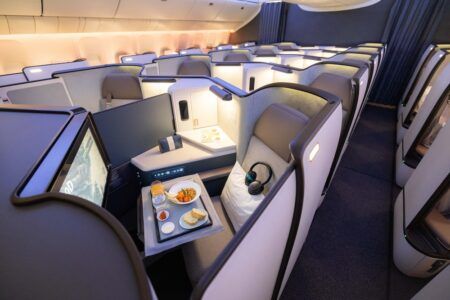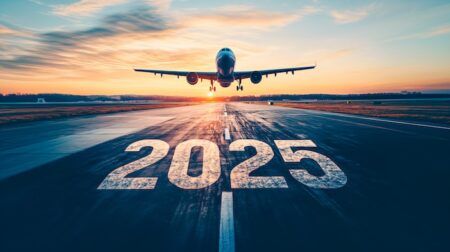The airline industry is undergoing a profound digital transformation as demand is reshaping traditional business models. With IFEC emerging as a cornerstone of the modern travel experience, airlines have an opportunity to disrupt passenger engagement while exploring new revenue streams.
As the pressure to adapt grows immensely, with passenger traffic experiencing its fastest global growth in years, onboard connected commerce is a promising transformation in experience-centric interactions.
Elevating passenger experiences in the sky
Today’s travellers expect seamless connectivity, whether on the ground or in the air. As digital pioneers like Amazon, Netflix and Uber continue to set new standards for convenience and personalisation, airlines must embrace similar innovations to meet evolving expectations. In the eyes of consumers, real-time connectivity is not a luxury, it is a given. Passengers now expect a digital experience that mirrors the immediacy and personalisation they enjoy in their daily lives.
Travelling in the sky is a time for relaxation, used now to browse social media or stream entertainment content. So why wouldn’t it also include shopping opportunities? As airlines explore their ability to customise the onboard experience, they must consider extending their services for the benefit of passenger satisfaction and new avenues for monetisation.
Long constrained by obsolete systems that prevented them from guaranteeing connected services, airlines can easily adopt a holistic approach that puts the passenger back at the heart of the journey without having to invest massively.
The power of in-flight commerce

Traditional in-flight retail has long been constrained by static catalogues, limited product selections, and cumbersome transaction processes. However, the rise of e-commerce platforms is transforming onboard shopping.
Airlines can now unify all ancillary revenue streams into a single marketplace, simplifying e-commerce management while enhancing the passenger experience via seatback screens or personal devices. Beyond traditional in-flight sales such as meals, travel essentials, branded merchandise, and duty-free products, airlines can expand their offerings to include services like seat or class upgrades.
Through partnerships with third-party vendors, airlines can integrate destination services such as hotel reservations, restaurant bookings, and tickets for concerts or museums. They can even facilitate larger purchases that go far beyond the cabin’s limitations. The possibilities are endless.
With secure payment options, whether via credit card or loyalty rewards, real-time inventory updates, and flexible delivery choices – onboard, at the airport, or at home – this next-generation retail experience maximises both convenience and revenue potential.
Challenges and opportunities
Despite its immense potential, in-flight connected commerce does present challenges. Connectivity instability, lack of bandwidth, infrastructure costs, and cybersecurity or fraud concerns remain significant hurdles, and even more so in an aircraft. However, the industry is witnessing rapid advancements in satellite technology and cloud-based SaaS solutions, making these innovations more viable than ever.
By leveraging agnostic technologies, airlines can refute weaknesses, even at 10,000 feet, digitising services, streamlining operations, reducing logistical costs, and maximising engagement, regardless of the type of aircraft or the embedded system. Airlines no longer have to worry about content accessibility, as it is updated before takeoff and can be streamed offline. Connectivity is only required during identification and payment.
With modern solutions, the shift to digital commerce onboard also enables dynamic pricing strategies, product recommendations based on passenger preferences, order history, navigation history, or cabin class driven, as well as cross-selling opportunities – enhancing profitability while delivering an enriched travel experience.
The traveller’s e-commerce journey is no longer restricted to the aircraft, and can be extended to maximise loyalty, starting at home when booking tickets, through the flight, and even upon arrival – ensuring greater flexibility for passengers. This upstream connection with the traveller allows airlines to offer them an advanced digital experience with a tailor-made marketplace and adapted offers.
Breaking down boundaries
The future of in-flight retail is digital, dynamic, and deeply personalised. Embracing connected commerce, airlines can not only enhance passenger satisfaction, but also create new revenue opportunities in an increasingly competitive market. IFEC technologies, as strategic tools, can seamlessly help them to integrate entertainment, shopping, and even more services into a unified and agile digital marketplace experience.
As the boundaries between travel and technology continue to blur, the sky is no longer the limit: it’s the launchpad for a new era of airline commerce. The question is no longer how airlines can digitise, but which new standards they can set in the cabin.
Tanguy Morel is CEO & co-founder of Moment




